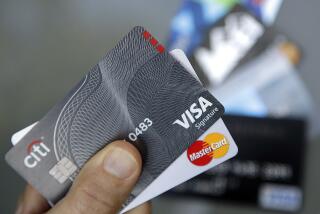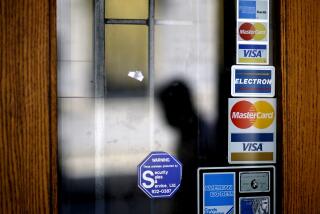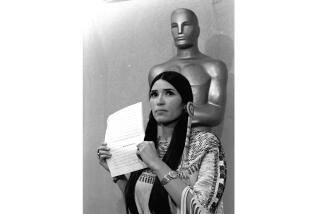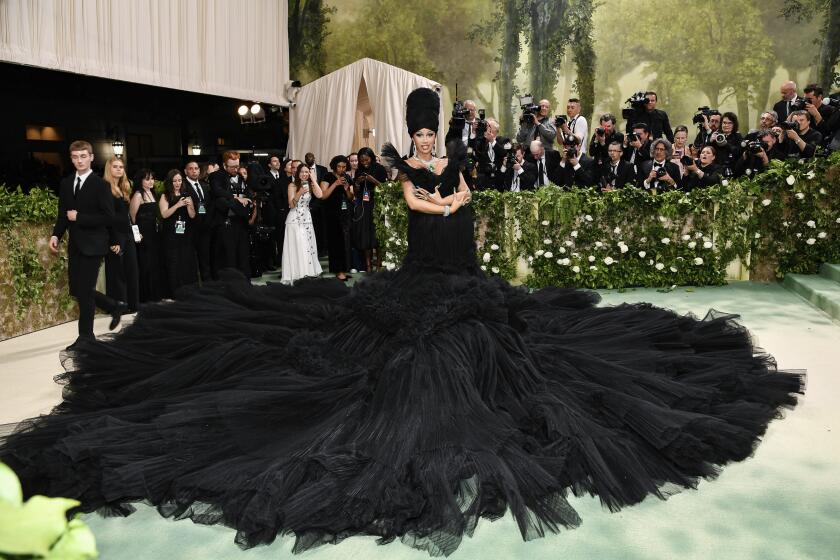PERSONAL HEALTH : When It’s Time to Make a Shady Deal
Buying the right sunglasses is as crucial in Southern California as buying the right car or swimsuit. Chew on this: Shoppers here contribute their fair share to the $1.9-billion sunglasses market, industry spokespersons say.
Some splurge at shops like L.A. Eyeworks on Melrose, where price tags of $150 to $375 can make you look like Tom Cruise in “Rainman” or Susan Sarandon in “Thelma & Louise.”
Others are fiercely brand-loyal, going to specialty shops like the Sunglass Hut for Ray-Bans, Oakleys or Serengetis. The rest of us wait for a sale at the corner pharmacy.
Pricey sunglasses can make a great fashion statement, but they don’t necessarily protect eyes better than inexpensive pairs, according to guidelines published by the American Academy of Ophthalmology.
More important than reading price tags, experts concur, is reading the labels and understanding them, then picking glasses based on lifestyle. These labels might soon change, if the Food and Drug Administration, which regulates sunglasses as medical devices, gets its way.
The Studies
Sunglasses reduce the risk of developing cataracts. In a study of Chesapeake Bay fishermen, those who wore no eye protection were three times as likely to get cataracts as those who wore sunglasses or brimmed hats.
Too much sunlight can also lead to two other eye problems: pterygium, a fleshy growth of the cornea, and pinguecula, a yellowish bump on the white of the eye.
Excess sunlight can also cause “snow-blindness,” a burning of the eyeball most common among snow skiers.
Sunglasses can ward off crow’s feet as they improve eye comfort and even vision.
“If you work or play outside in the sunlight two hours or more a day without eye protection, that night your ability to see is decreased by 50%,” claims Dr. Donald Pitts, professor emeritus of environmental optometry and anatomy at the University of Houston and a Tulsa sunglasses expert, citing a published study.
Even on cloudy days, Pitts advises using sunglasses, because ultraviolet radiation is still transmitted.
Shopping Tips
Sunglasses now on the market are classified into three categories under a voluntary labeling program developed in the mid-1980s by the Sunglass Assn. of America in cooperation with the FDA.
* Cosmetic purpose sunglasses filter at least 70% of ultraviolet B (UVB) radiation, the kind linked to cataract development, and 20% or more UVA, which can damage the retina.
* General purpose sunglasses filter 95% UVB radiation and at least 60% UVA.
* Special purpose sunglasses block 99% UVB and at least 60% UVA.
If the label is unclear, ask your eye doctor to evaluate the sunglasses.
The Proposal
The FDA wants to strengthen the regulations and make them mandatory, says spokeswoman Sharon Snider.
“We are considering a regulation that would require all sunglasses to transmit no more than 1% UVB,” she says. “This would provide maximum protection. It would eliminate the categories. We will notify manufacturers by letter this month that we are considering this regulation.”
The idea meets with resistance from some sunglass manufacturers. “The vast majority of sunglasses already meet the (proposed) FDA requirement,” says James Pritts, president of the Sunglass Assn. of America.
Decisions, Decisions
Once shoppers choose the best ultraviolet blockage for their activity, there are other options. Polarizing glasses reduce reflected glare. Mirrored glasses are meant mostly for wear under very high glare from water or snow, according to the American Optometric Assn.
Choose as big a lens size as possible, advises Pitts, the Tulsa sunglass expert. Wraparound styles filter out the most radiation. Get a style that fits closely to the eye, he adds, to block as much sunlight as possible.
Gray is often termed the best lens color because there is little color distortion. Next often mentioned: greens and tans.
Shopping Habits
If you yearn to look like Tom or Susan but can’t or won’t pay the price, you’re not alone.
The average price paid for a pair of sunglasses in 1992 was $8.24, according to the Sunglass Assn. of America. “About 80% of sunglasses sold are under $20,” says a spokesman for Bausch & Lomb, manufacturer of Ray-Bans.
For More Information
* “Sunglasses Are More than Shade” is available by writing the American Optometric Assn., 243 N. Lindbergh Blvd., St. Louis, MO 63141.
* “Eye Facts About Sunglasses” is available from the American Academy of Ophthalmology, 655 Beach St., San Francisco, CA 94109-1336.
*
Your Body runs every other week in View. Kathleen Doheny cannot answer mail personally but will attempt to respond in this column to questions of general interest. Please do not telephone. Write to Your Body, View Section, Times Mirror Square, Los Angeles, Calif. 90053.






